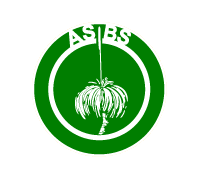
ASBS Newsletter – Book Review
1997 IUCN Red List of Threatened Plants
Edited by K.S.Walter and H.J.Gillett.
(From ASBS Newsletter Number 98, March 1999)
IUCN - The World Conservation Union, Gland and Cambridge (1998).
lxiv +862 pp. ISBN 2-8317-0328-X.
Price not known.
This massive A4 tome supersedes the long-out-of-date edition of 1978 and lists 33 798 species of vascular plants (of an estimated global flora of 270 000) as threatened, i.e. rare, vulnerable, endangered or extinct. The categories approximate to those developed for ROTAP but lack the supplementary binary code that indicate geographical range, population size and occurrence in conservation reserves. The cutoff date for entry of taxa for the published version was 22 May 1997.
Intrductory chapters explain the history (originating with Peter Scott in 1963) and purpose of the list, data sources, and organisation, including the difficulties of combining lists from disparate sources. Only the data from North America, Australia, South Africa and Europe are described as 'reasonably robust.' Where a taxon is listed for more than one region, its status is listed for each and a global assessment given. For each taxon, one or two references are given for further information. Tables summarise such aspects as breakdown by country and family. The 'top ten' most threatened areas are islands such as the Seychelles, Pitcairn and Réunion. World-wide, 380 species are believed to be extinct and 6522 endangered.
Overall, a very useful summary of the global situation as it stood in May 1997. The data are managed in a relational database at the World Conservation Monitoring Centre, Cambridge, England, currently averaging 100 changes and additions a day. Further information can be found at http://www.rbge.org.uk/bgbase
It is notable that the non-vascular flora was excluded because the 'amount and quality of data . . . are not yet adequate to give a reasonable global overview.' In Australia we have made a start in this direction (G.A.M.Scott et al., 'A Conservation Overview of Australian Non-marine Lichens, Bryophytes, Algae and Fungi', Wildlife Australia 1997), but this is clearly where far greater effort must be made.
Reviewer: Alex George
'Four Gables', 18 Barclay Road
Kardinya, W.A. 6163